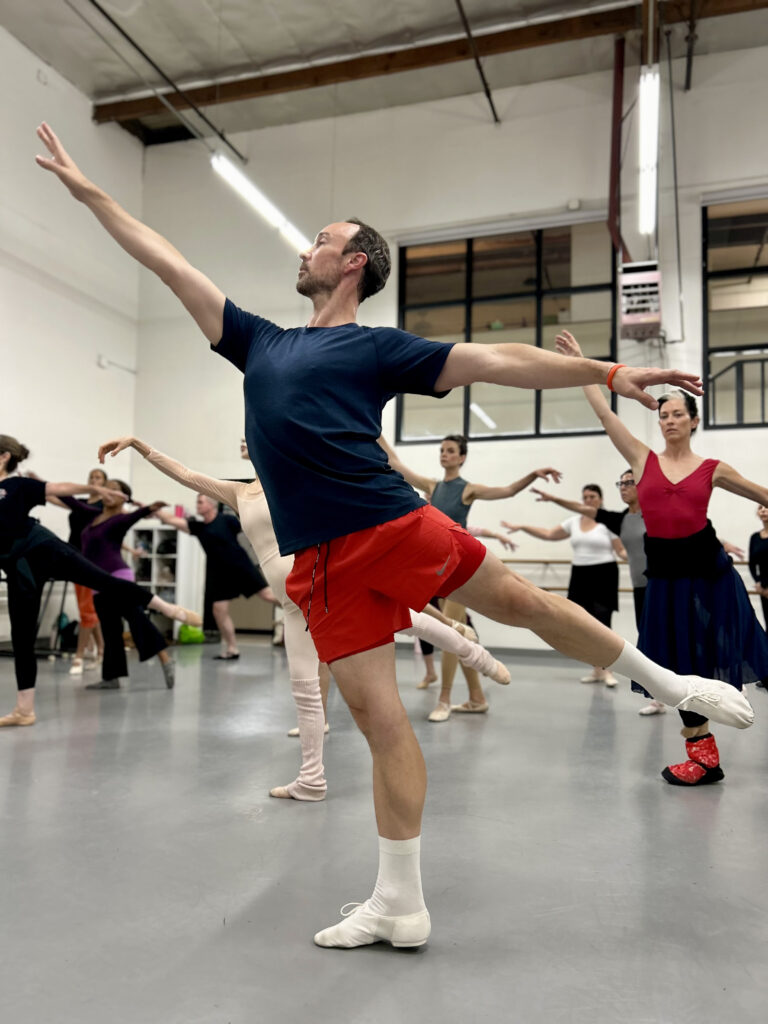James Ady on Finding Magic in Teaching Adult Ballet Students
Celebrated as a charismatic performer and an exceptional partner, James Ady danced with American Ballet Theatre and as a principal with Pennsylvania Ballet. He retired from the stage at age 29 because of a foot injury, then earned a degree in journalism from Boise State University. Ady returned to the dance field to work as a ballet master for Ballet Memphis before embarking on a career in teaching. He’s been on the faculty of the University of Utah, the Colburn School, and the University of Southern California Glorya Kaufman School of Dance. Five years ago, Ady began teaching open classes at Westside School of Ballet in Santa Monica, California, and discovered a newfound joy: working with older ballet students.
I now work with some of the smartest, hardest-working, and most inspiring people I’ve ever known. Every Sunday morning at 9 am—which, as a former professional, is very early to be taking a ballet class—40 to 50 adult dancers come into Westside Ballet and start their pliés with me. Our median age is somewhere in the late 50s, and I have students from ages 14 to 85!
These dancers have taught me about longevity, perseverance, and doing what you love for as long as you absolutely can. I call them “Sunday Morning Superstars,” and many of these dancers treat these classes like a religion—rarely missing a day. Although I only teach them on Sundays, they are often taking five or six classes a week.
These fiercely dedicated adult students are curious and want to know the “why” of ballet. I encourage them to ask questions, and every week they don’t disappoint! They ask, “Why do we roll up through the spine after port de bras forward?” and “What is a temps de cuisse?” and “Is that a piqué or a relevé?” They continually challenge me as a teacher and an artist.

Each student has given me a different answer as to why they dance: to stay active, to enjoy the stimulation of the group environment, to become more flexible, or just to watch other bodies move to the music. One of my students, who is 85, said, “Dancing is the barometer of my aging physical condition: What I used to do with no effort is no longer within my repertory, but I appreciate what I still can do. Dancing is a way of being a member of a community, and I’m happy to see, talk, and dance with teachers and students with whom I have been taking classes for a long time.”
Although yoga may be kinder to the joints, getting to dance as an adult brings expressive and artistic elements to students’ lives. Last summer, Westside Ballet offered a new adult workshop and we did excerpts from Giselle. Getting to observe the joy that comes from performing in front of an audience and collaborating in a new and exciting way was absolutely thrilling.
Ballet can be a lifelong exploration of art, physicality, and mental aptitude. Learning new rhythms, moving the body, accelerating the heart rate, picking up choreography, and counting music are just some of the benefits. Adult dancers not only seem to have an unending desire to expand their ballet vocabulary, they also often have the time and resources necessary to hone in on a new skill or step. Dance can inspire people of all ages.




